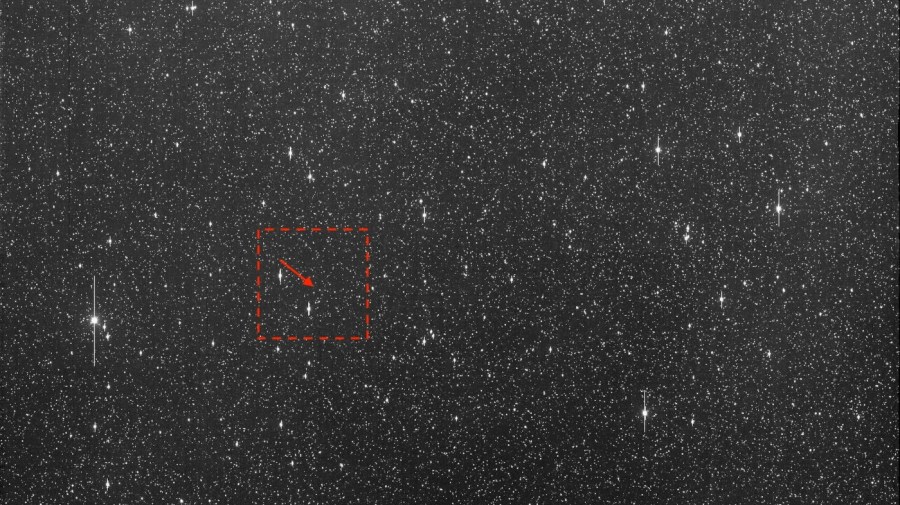
Let’s get the first question out of the way quickly. Asteroid 2024 YR4, a 50- to 90-meter-wide Earth-approaching object, is likely not going to hit our planet in 2032. But, since the odds of it increased to 3.1 percent and then fell back to 1.5 percent, the media has suddenly taken notice. No doubt, the odds will fluctuate over the next several years.
The good news is that if Earth is incredibly unlucky and the asteroid does hit on Dec. 22, 2032, it will not destroy the world. However, if it impacts the Earth, the asteroid will create a good-sized crater and kill anyone unlucky enough to be in the vicinity of the impact zone. The explosive force would be the equivalent of a very large nuclear bomb. The asteroid could be like the one that exploded over Siberia in 1908, burning 80 million trees in an 830 square-mile area.
In either scenario, an air burst or a direct impact, 2024 YR4 could lay a good-sized city to waste if it were unlucky enough to be in the crosshairs. An impact could be a world-changing calamity. But it would not likely destroy most life on Earth, like the asteroid that ended the age of the dinosaurs 66 million years ago. That rock measured 10 to 15 kilometers in diameter.
A few years ago, NASA, along with a group of local and state officials, war-gamed the effects of a 70-meter-wide asteroid exploding eight miles above the city of Winston-Salem, North Carolina. The exercise concluded that the city would be destroyed as if it had been hit by a nuclear bomb, with deaths in the thousands. The calamity would be exacerbated because a significant number of people, distrustful of authority, would ignore orders to evacuate.
NASA also conducted an asteroid deflection test when it smashed the Double Asteroid Redirection Test into the asteroid Dimorphos, which orbited a larger object called Didymos. The mission succeeded in changing the orbit of Dimorphos around Didymos by 33 minutes, proving the concept of asteroid deflection.
Could a similar mission deflect Asteroid 2024 YR4 should it prove necessary? Is there another alternative to ward off the asteroid? Robin George Andrews, a British scientist and journalist, suggests that there may not be enough time to mount a mission to deflect Asteroid 2024 YR4. He estimates that it would take ten years to execute with any assurance of success.
Andrews posted the problem of a deflection mission on X.
“That means that if we try to deflect 2024 YR4 with *just four years to go* — in 2028, when it’s close to Earth again — then that deflection would need to be VERY strong. We’d either need a bigger … impactor, or a maybe a nuclear explosive device.”
On the other hand, the U.S. may have another means of warding off 2024 YR4 — namely, President Trump’s revival of the Strategic Defense Initiative, which he dubs “Iron Dome for America.” It will be a multi-layered defense system designed to ward off a nuclear attack by an enemy power such as Russia or China. It will have a space-based component and will likely include laser weapons.
Phys.org notes that the concept involves firing a laser at the surface of an oncoming asteroid. The laser vaporizes part of the object, creating a jet of plasma that acts to change its velocity, thus deflecting it from a collision course with Earth.
It is possible that a laser weapon designed to destroy a nuclear-armed missile could also be used to deflect asteroids and other objects that threaten Earth. NASA or perhaps the Space Force should build a prototype and put it to the test, as an alternative to the impact method of asteroid deflection.
As far as 2024 YR4 is concerned, it is very likely that “all of the above” is an academic exercise. A 3.1 or 1.5 percent probability of a disaster is still quite small. December 22, 2032, will probably just be another day for people on the planet Earth.
On the other hand, Space.com quotes David Rankin, an operations engineer for the University of Arizona’s Catalina Sky Survey, who has noted that there is a 0.3 percent possibility that 2024 YR4 will hit the Earth’s moon. That event would not affect anyone on Earth, but it might prove to be a hard day for anyone living and working at a lunar base as envisioned by Artemis, depending on where the object hits.
Still, a way must be developed to deflect threatening asteroids on demand and not as a long-term, one-off engineering project.
Mark R. Whittington is the author of “Why is It So Hard to Go Back to the Moon?” as well as “The Moon, Mars and Beyond,” and, most recently, “Why is America Going Back to the Moon?” He blogs at Curmudgeons Corner.












